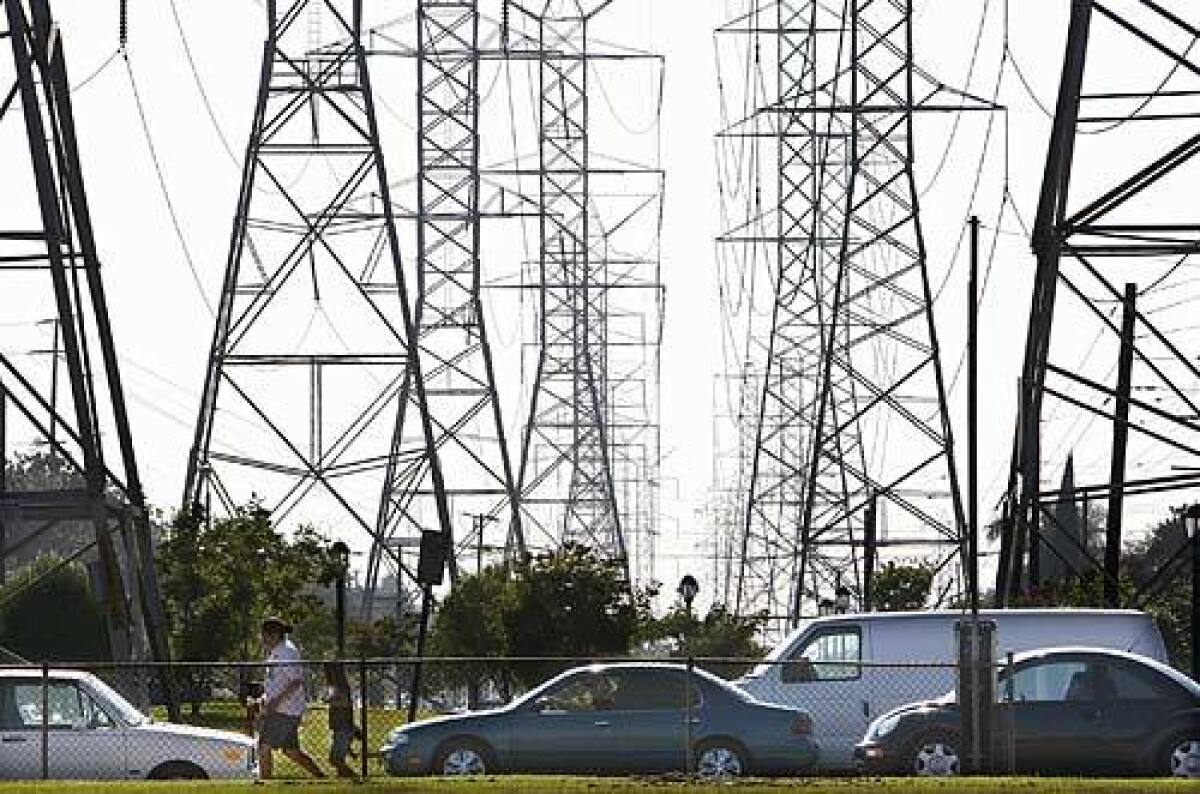Electromagnetic field studies reach different conclusions

- Share via
How could respectable scientists armed with the same data on electromagnetic fields end up on opposite sides of the spectrum? The studies themselves are largely to blame. The results are often ambiguous and hard to interpret. Some suggest a link between EMF and health problems, and some don’t.
David Carpenter, a professor of environmental health sciences and biomedical sciences at the University at Albany, State University of New York, says he has more faith in the studies that suggest a danger. “A positive study [that shows a link] is more believable than a negative one.”
But even positive studies leave room for doubt. The first study to suggest that power lines could cause childhood leukemia -- the granddaddy of EMF worries -- is a case in point.
Published in the American Journal of Epidemiology in 1979, the study found high rates of leukemia among children living near large power lines in Denver. But the researchers never actually measured the magnetic field in any homes, a serious flaw that puts the results in question, says Ken Foster, a professor of bioengineering at the University of Pennsylvania in Philadelphia who has studied EMFs for decades. Although the study is still revered by some EMF activists, Foster calls it “ancient history” and says the results are far more likely to be a fluke than any real indication of danger.
A study of more than 13,000 children published in the British Journal of Cancer in 2000 found that living in a house with a magnetic field above 0.4 microteslas (about what you’d find in homes within 100 feet or so of a large power line) seemed to double the risk of childhood leukemia. But very few children lived in houses with such high fields. For at least 98% of children with leukemia, there was no link between power lines and their illness, says Dr. Martha Linet, chief of radiation epidemiology at the National Cancer Institute and one of the authors of that study.
Even for children living in the highest fields, Linet isn’t convinced that the risk is real. Every study has its limitations. In this case, she says, researchers had a hard time finding a control group of healthy kids who live near power lines -- not because such kids are any sort of rarity but because families who live in such neighborhoods tend to be working-class people who have other things to do besides participate in studies.
A study published in the British Medical Journal in 2005 caused a stir when it found that children born to homes as far as 650 yards from a power line had a 20% greater chance of developing leukemia than children born in houses farther away. But researchers noted that at 650 yards, the field from the power line would be extremely weak, perhaps less than the fields from home appliances. Without a plausible explanation for the findings, the researchers concluded that they might have simply been a quirk of statistics.
Overall, Linet says, the studies of power line radiation leave researchers in an unsatisfying “gray area” where it’s impossible to prove a risk but also impossible to absolutely rule it out.
Foster says the evidence that power lines can cause leukemia is about as strong as the evidence that secondhand smoke can cause lung cancer. But there’s a reason why only one threat is taken seriously by public health experts everywhere: Cigarette smoke is a known carcinogen, but nobody has ever explained how low-level EMFs could actually cause cancer.
Fears about power lines foreshadowed the new wave of concern about cellphones. And, so far, studies on cellphones and cancer have been equally frustrating -- for researchers as well as a general public looking for definitive answers.
Most of the early reports from the multinational Interphone study have failed to find any link. For example, a German study comparing more than 8,000 people with glioma and meningioma brain tumors with more than 1,000 healthy people found no sign that those with tumors spent more time using cellphones.
A similar Israeli study published in 2008 did suggest a connection between cellphones and tumors in the parotid gland, which is one of the glands that produce saliva. After checking the cellphone habits of 460 people with these tumors and 1,266 healthy controls, researchers concluded that those who used cellphones most were 50% to 60% more likely to develop tumors than those who rarely used the phones. However, most of the tumors were benign (as parotid gland tumors tend to be), and researchers cautioned that there’s not enough evidence to say that cellphones actually caused the tumors.






